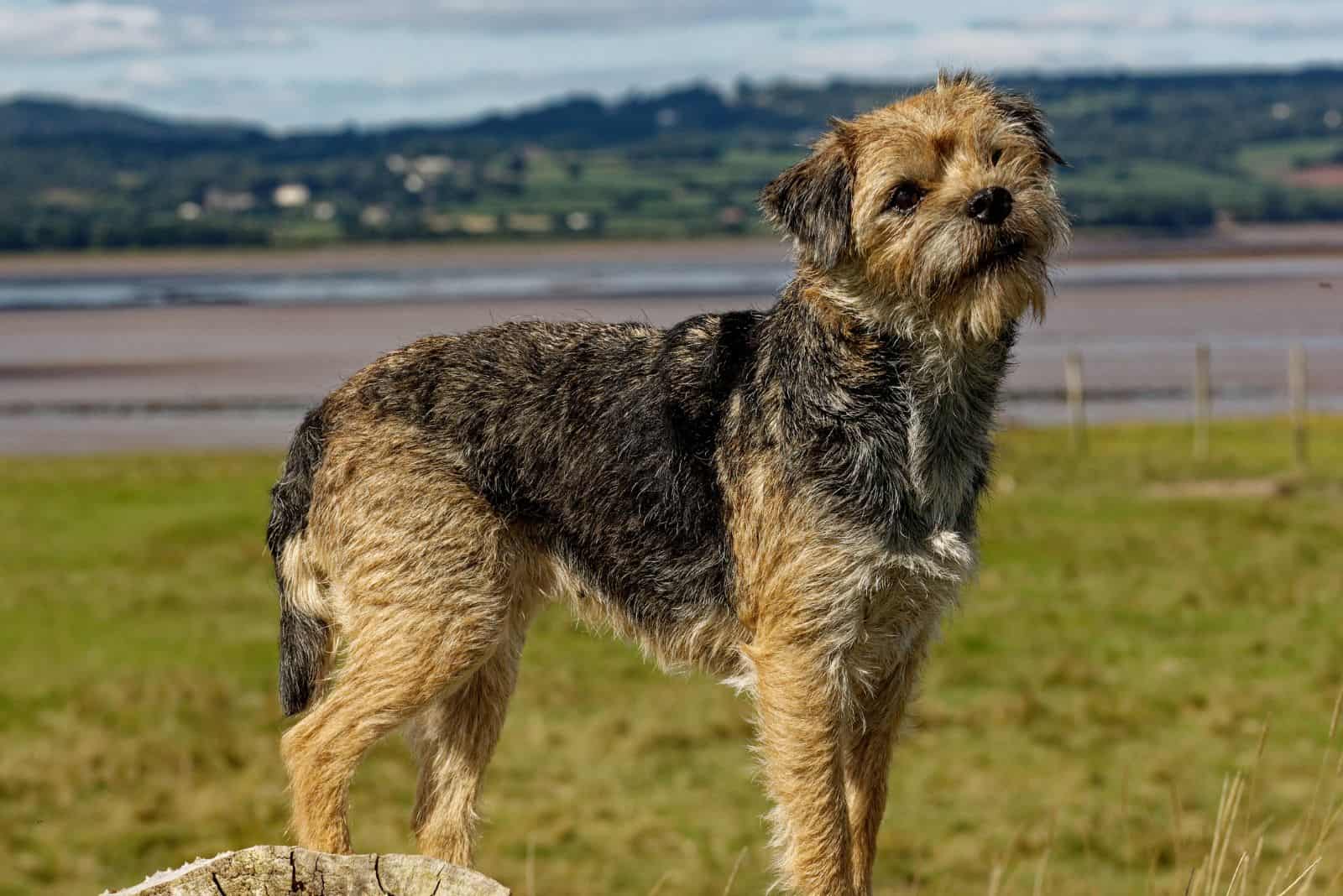The Border Terrier growth chart is a great tool that helps owners of this lovely dog breed keep their pups healthy and in good shape.
There are several factors that can affect the growth of a Border Terrier, or any other canine for that matter, which include genetic background, individual abilities of a canine, diet, etc.
However, the most important part of getting a healthy pup is to buy/adopt one from a reputable breeder.
If you get a Border Terrier puppy from a suspicious source, there are high chances you won’t be able to maintain their development within the breed standard, which could result in unwanted health problems related to their growth.
Border Terrier Growth Chart
The Border Terrier is one of the small dog breeds that steals your heart in a matter of seconds because of its looks and personality.
Although they look fairly small, these canines know how to defend themselves from any kind of threat, which is why they’re often compared to Bulldogs and other small/medium doggies.
To fully understand the Border Terrier dog breed, and learn how to take care of one, it’s important to take a look at their development from early puppyhood to the adult phase of their life.
The best way to begin such a journey is to present a weight chart that will help you analyze your pup as it grows.
[table id=740 /]
Border Terrier Puppy Growth Chart
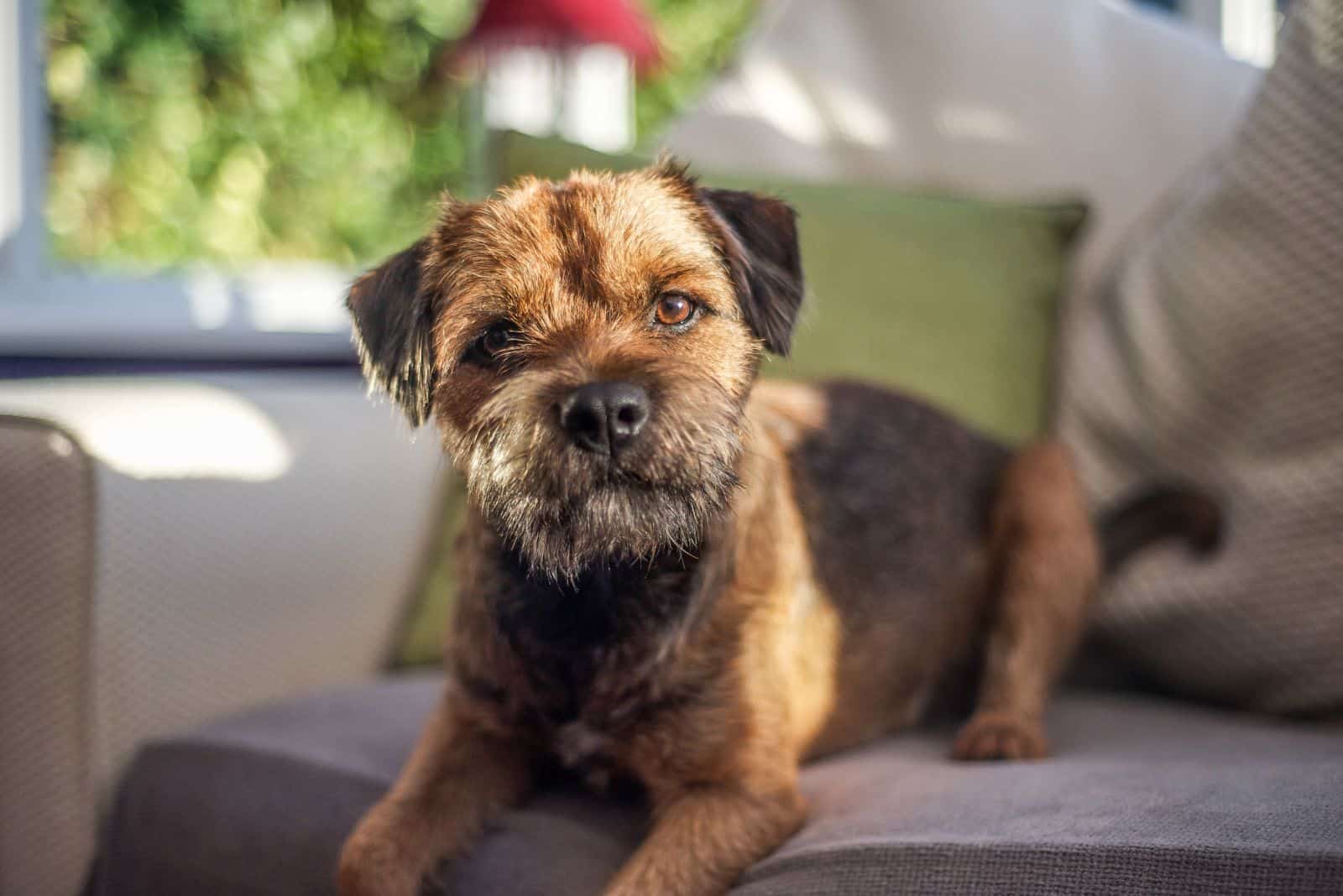
The best way to know how to take care of your pet is by following the growth chart of its breed. The Border Terrier growth chart can help you maintain a healthy weight of your canine by regarding the average dog weight of its breed.
Puppies can develop in a healthy way only if their owner is familiar with the whole process, which is why we decided to dedicate the next few paragraphs to discuss the stages that every Border Terrier puppy will go through.
First Two Months
During the first month of their life, Border Terriers aren’t so dependent on humans as they receive food and warmth from their mother.
This stage is almost the same for every canine breed, from small breeds like Yorkshire Terriers, Chihuahuas, and Maltese to big dogs like Great Danes, Bernese Mountain Dogs, and Chow Chows.
RELATED: Great Dane Growth Chart: A Guide To Gentle Giant’s Size
Essentially, the puppies will be fed only their mother’s milk during the first two weeks of their life. As soon as they turn three weeks (one month, at most), they should be more than ready to try dog food for the first time.
Of course, they will receive puppy food that contains nutrients that are important for their growth and development.
During the second month, Border Terriers will become more active as they’ll start to move around more freely and stand strong on their feet.
Three To Six Months
Although they’re still young puppies, Border Terriers will start to show significant changes in their physical appearance and in their behavior.
You won’t even be able to notice how fast your dog will turn from a small pup that could barely open its eyes into a strong, playful puppy that loves to jump around all day.
Although playtime can be both fun and educational, it’s important to put focus on training during this period.
Socialization and obedience are the first two training methods that should become a daily habit in order to have an obedient canine that won’t show signs of destructive behavior.
They won’t be so friendly towards other doggies as much as towards other people, so make sure that you train these pups from an early age in order to prevent any type of negative behavior.
Six To Ten Months
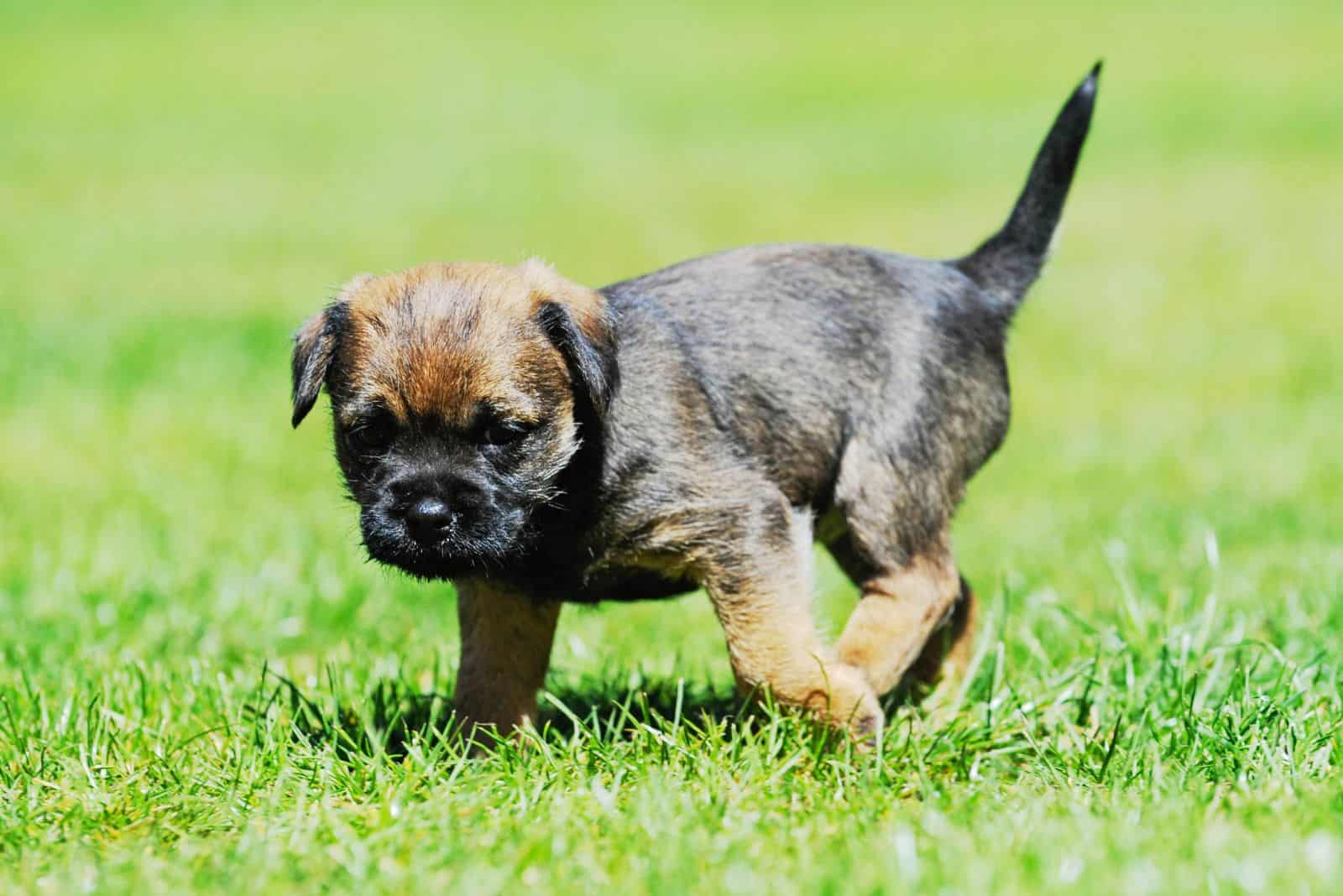
Border Terrier puppies usually go through the rapid growth stage during the first six months of their life, so don’t be surprised if your pup enters the process of stagnation every now and then during the second half of their first year of life.
It’s common for small breeds to almost reach their final size up to the tenth month of their life, although the full growth cycle ends once they turn at least one year old.
By the time your pup turns six months of age, it should already have adult teeth and a strong body frame.
Spaying/neutering is recommended during this period as well, as it won’t affect the canine’s growth.
Both physical and behavioral training should already become a part of regular routine at this time, and it shouldn’t stop even during the adult stage of the dog’s life.
Ten To Twelve Months
The majority of Border Terriers will already reach their adult weight during this period, so don’t be surprised if your pup doesn’t gain any more weight from now on.
Even though visits to the vet should have become a habit by now, you should pay even more attention to your pet, as symptoms of certain health issues might start to appear at this age.
Essentially, there won’t be many significant changes during this period of time, as the majority of the Border Terriers will be considered adults already.
Adulthood
Even though Border Terriers usually reach their adult growth by the time they’re twelve months of age, not all canines are actually mature enough to be called adult Border Terriers.
These pups usually need a few months more to become fully grown both physically and mentally, which is usually up to eighteen months.
How Big Will My Border Terrier Get?
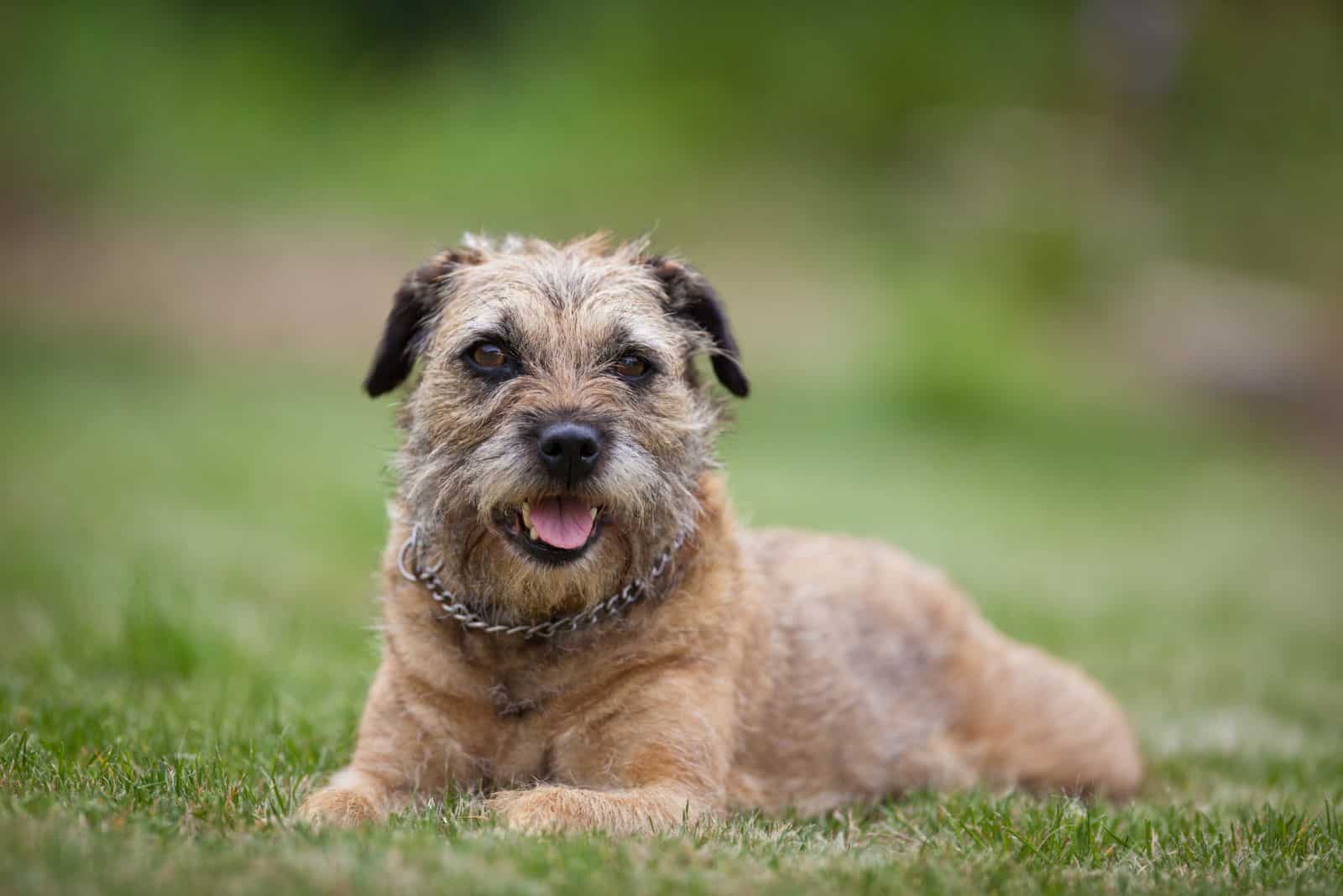
According to the breed standard set by the American Kennel Club (AKC), a Border Terrier can grow up to 15 inches, and weigh up to 16 lbs at most.
Essentially, Border Terriers reach almost the same size as Beagles and Boston Terriers, but they can also be the same size as Cavalier King Charles Spaniels and Corgis, depending on their growth pace.
READ NEXT: Beagle Growth Chart: Everything You Need To Know Before Buying
Therefore, you shouldn’t be worried even if your Border pup doesn’t grow over 12 or 13 inches, as this is perfectly acceptable by the breed standard.
When Are Border Terriers Fully Grown?
As we mentioned earlier, the majority of Border Terrier doggies reach their adult dog’s weight by the time they turn one year of age.
This is considered a standard for different breeds of small growth, including Pugs, Chinese Crested Dogs, Chihuahuas, Maltese, Pomeranians, and other little pups.
However, physical development doesn’t necessarily mean that the canines are fully mentally developed as well.
It is believed that even small doggies, such as the ones we mentioned above, and Border Terriers, won’t reach maturity until the 18th month of their life.
Of course, this is not a general rule, meaning that some pups might become mature at 12 or 13 months of age, but not very often.
How To Measure A Border Terrier
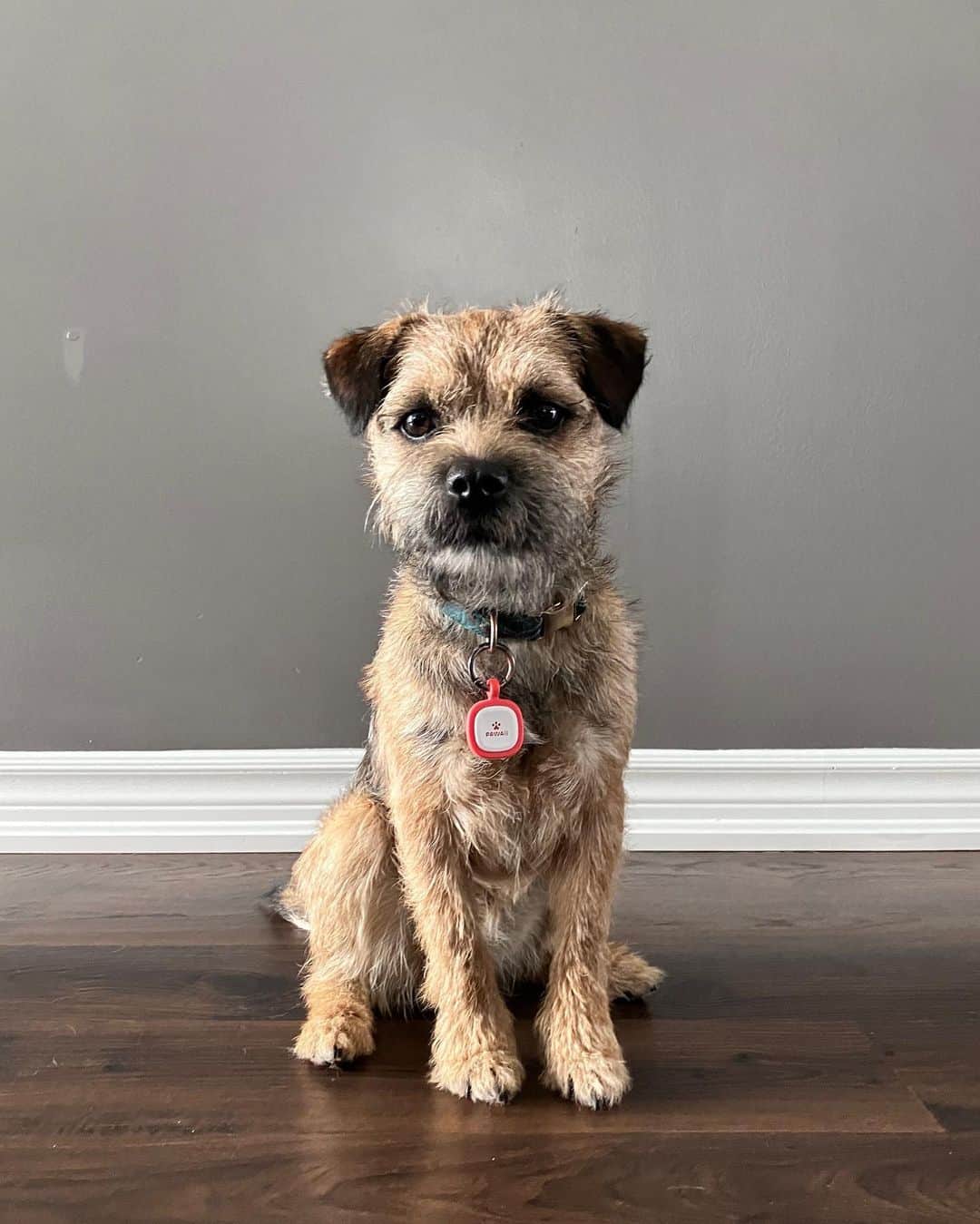
There are several ways to check your dog’s size and weight. If you’re not really into taking your pup to the vet every time you want to know how tall and heavy it is, here are some ways you can check its growth at home.
The easiest way to measure the weight of Border Terriers is to measure yourself on a bathroom scale, and then repeat the action with the dog in your hands.
The difference between these two weighings will be the weight of the pooch.
Considering that Border Terriers remain rather small in size, you can also put them in a container that you place on the scale, but make sure to add your pup’s favorite toy or something that will keep them calm during the measuring period.
How To Measure Their Height
This will be a much easier task than measuring a Great Pyrenees, an Irish Wolfhound, a Newfoundland, a German Shepherd, or another bigger canine, as you won’t have to keep your pup calm while trying to mark the spot high on the wall.
RELATED: German Shepherd Growth Chart: How Big Will Your GSD Be?
In order to measure the dog’s height, you will need a pencil to mark the height on the wall, and a measuring tape.
Place your dog next to the wall, find the withers on its back, and mark that spot on the wall. Once you’re done, the only thing you should do is measure the space between the floor and the marked place. This will be the height of your pup.
If you want to avoid leaving traces on your wall, you can use any kind of tape or a sticky note to mark the spot instead.
How To Control Your Dog’s Weight
A puppy’s weight is an important part of tracking its overall growth, which is why it shouldn’t be neglected at any cost.
The best way to make sure that your Border Terrier doesn’t become either obese or underweight is to check its weight at least once a month during the first year of its life.
You can compare the current weight with the Border Terrier growth chart, which is a great general guideline. Of course, there might be a small discrepancy in weight, but only of a few pounds.
High-quality dog food is the key to the healthy weight of any dog, including Border Terriers.
Make sure that your pup is getting all the nutrients it needs during every stage of its life.
Also, it’s important to make the switch from puppy to adult food in time, as puppy food usually contains a lot more carbohydrates that might negatively impact the weight of adult canines.
Small breeds like Border Terriers, Shih Tzus, Havanese, Miniature Pinschers, and others are usually prone to obesity, which is why dog owners should pay special attention to their weight.
READ NEXT: Small Guard Dogs: 21 Little Dogs With A Big Attitude
How Does Training Affect The Border Terrier’s Growth?
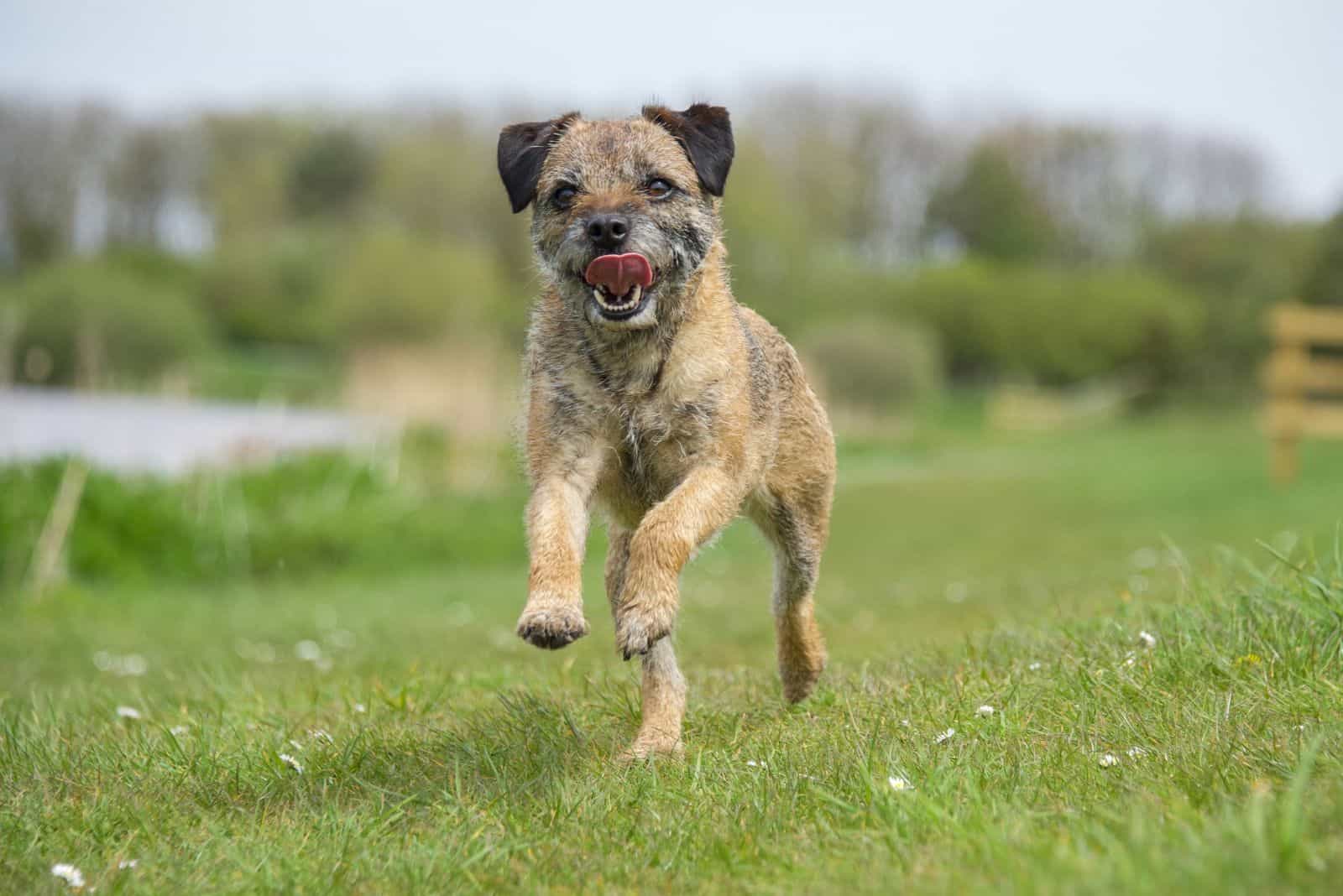
Training is another important part of the Border Terrier’s growth process, as it helps them develop in a healthy way during their puppyhood, and maintain a healthy weight in the later stages of their life.
Daily activities besides long walks are a great way to keep your pup active, and it also enables them to become more sociable and obedient.
Border Terriers are considered medium-energy canine breeds, which essentially means that they don’t require as much exercise as Border Collies, Boxers, Bull Terriers, and Belgian Malinois, but they’re definitely far from being labeled as a lazy dog breed.
This type of canine is a good watchdog, but they need to be trained not to attack other dogs or animals in general if there’s no obvious threat.
One of the best ways to ensure that your pup is getting enough exercise is to take him to dog parks or make a dog playground in your back yard.
Games, such as tug of war and fetch are excellent exercises that will help these dogs stay in shape, and also train them to respond to their owner’s commands.
Final Thoughts
The Border Terrier growth chart is a great tool for dog owners, especially those who don’t have prior experience with these pooches.
They might not be as big as Akitas, Leonbergers, Mastiffs, Siberian Huskies, and other large or medium canines, but that doesn’t make them any less valuable as family pets.
These short-haired, wheaten-colored doggies possess a great number of qualities, which is just more proof that small dogs can be equally great as pets and guard dogs as big pooches can.
If you train your pup from an early age, and take care of it during the growth process, you will get a wonderful family dog with amazing physical and personality traits.
READ NEXT:
